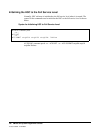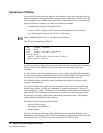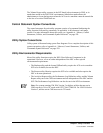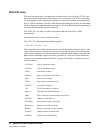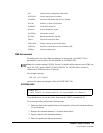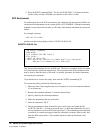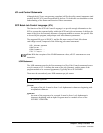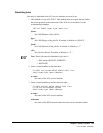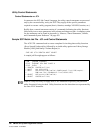
174 VM/HSC 6.0 System Programmer’s Guide
1st ed., 6/30/04 - 312579601
ACS UTIL Exec
The most convenient way for a beginner to run the utilities is to use the ACS UTIL exec.
When provided with the names of the utilities to be executed, the ACS UTIL exec builds a
file containing the control statements required to execute these utilities in the appropriate
SCP or CMS environment. The file is then displayed for editing by the user who must then
fill in, or change the supplied template parameters. The exec then checks these parameters
for errors and submits the utility for execution.
The ACS UTIL exec may be used for any utilities that run in the SCP or CMS
environments.
More than one utility may be invoked at a time.
The ACS UTIL command has the following syntax:
EXEC ACS UTIL util!list
This command creates utility statements to execute all the utilities named in util-list. The
valid values that may be entered in the util-list are listed below and are also shown in the
utility syntax examples provided throughout the remainder of this chapter. The minimum
abbreviation is denoted by uppercase letters. Appendix A, “Macros, Control Statements,
Utilities, and Commands Syntax Reference” on page 429 contains a complete syntax for
all of the utilities.
ACTIVities Activity distribution report
ACTIVity Activity distribution report
AUDIT Audit library contents
BACKup Back up the library control data set
EJECt Eject a list of volumes
ENTEr Enter volumes through the CAP
HSCINIT Create HSC startup job
IVP1 JCL for Installation Verification
LIBGen Decompile the LIBGEN database
MOVe Move volume(s) to other locations in the library
OFFLoad Offload a journal data set
RECONfig Reconfigure the library subsystem
REPLaceall Replace the scratch volume list
RESTore Restore control data set from a backup
SCRAtch Change volumes to scratch status
SCREdist Scratch volume redistribution



